
Neogastroclonium subarticulatum
Sea Belly
20 August 2021 (start time 09:00 PDT)
Gonzales Bay, Juan de Fuca Strait, B.C., Canada.
Tide: 0.7 foot tide 08:39 PDT (measured at Oak Bay Tidal Station)
Conditions: Overcast, light fog, wind East 10 km/hr, sea smooth, 14 ˚C, relative humidity 95%.
Phase of Moon: Waxing Gibbous (approx 46 hours prior to the Full Moon at time of interaction); Previous Phase, First Quarter, 15 August 2021 at 8:19am PDT: Next Phase, Full Moon, 22 August 2021 at 5:01am PDT.)
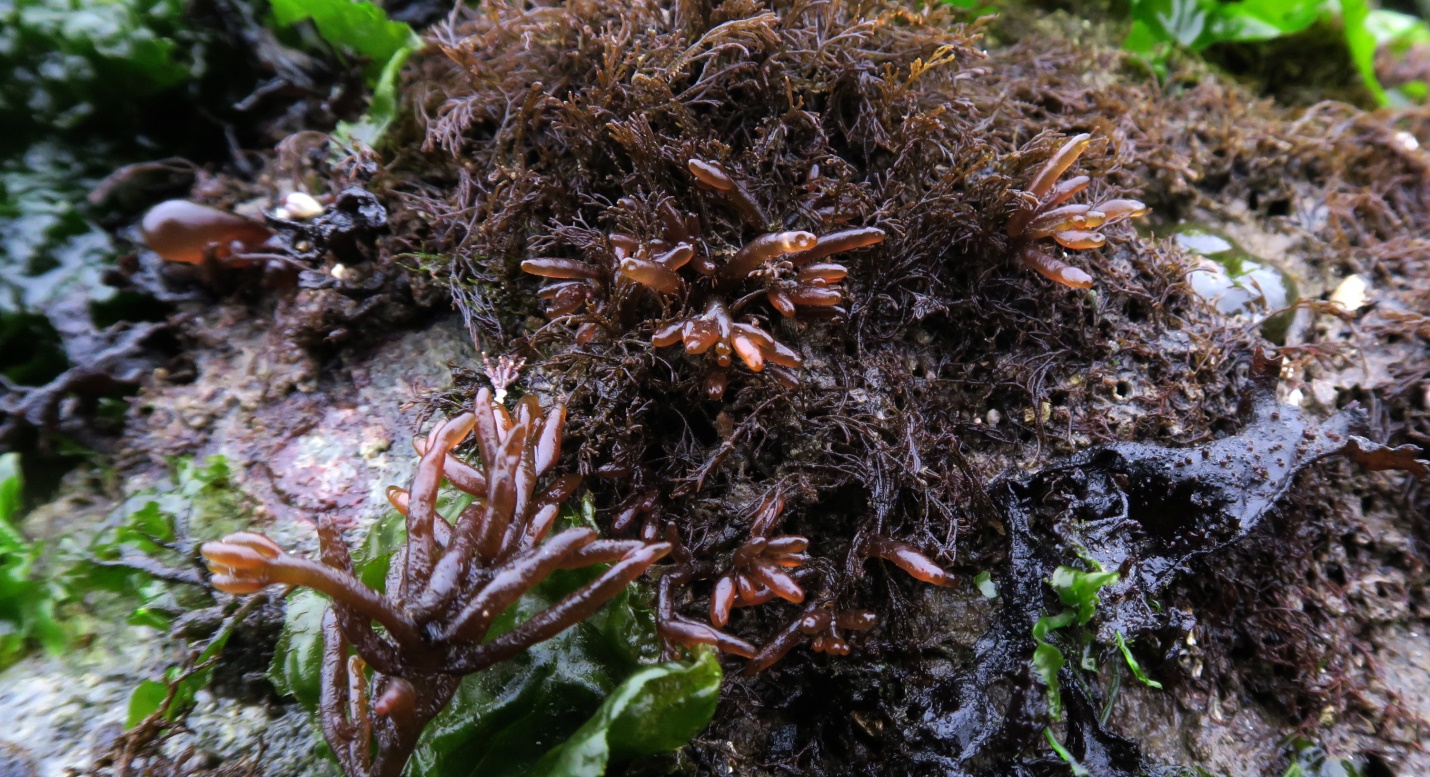
Figure 1: A few groupings of Neogastroclonium subarticulatum are growing here on the rocky substrate intermingled with other species of macro algae. The tips of several of the rounded stems show their characteristic ‘dimples’. The branchlets at the ends of the stems are normally hollow and this creates the indentation. Gonzales Bay, Juan de Fuca Strait, B.C., Canada. August 20, 2021. Photo ID 27332 ©Seaweedwhisperings.com
Person 1:
Even though you grow on rocks I wanted to spread you out on a shell/sand beach, maybe to expose your hidden qualities?
Tough, knobby appearance, with irregular/erratic branching.
Fairly smooth to the touch.
Long arms, stubby fingers.
You are not sharing much. My specimen was a dislodged piece, so I decided to observe a few specimens growing nearby that were still anchored to the rocks – to see if more sharing was available.
It’s growing amongst Pretty Polly (Polysiphonia pacifica). Not really wanting to show itself.
Branches are succulent and somewhat translucent.
On several branches there were many small branchlets, each arising from the main stem in a more or less close cluster – reminded me of a polytrichum moss.
Pleasant feel when biting a branch. No taste noted, but in about 30 seconds started to get an unpleasant tingling on my tongue and upper palate.
Person 2 pulled a branchlet off the stem, a long string of mucilage was evident…, doesn’t want to be separated from its home?
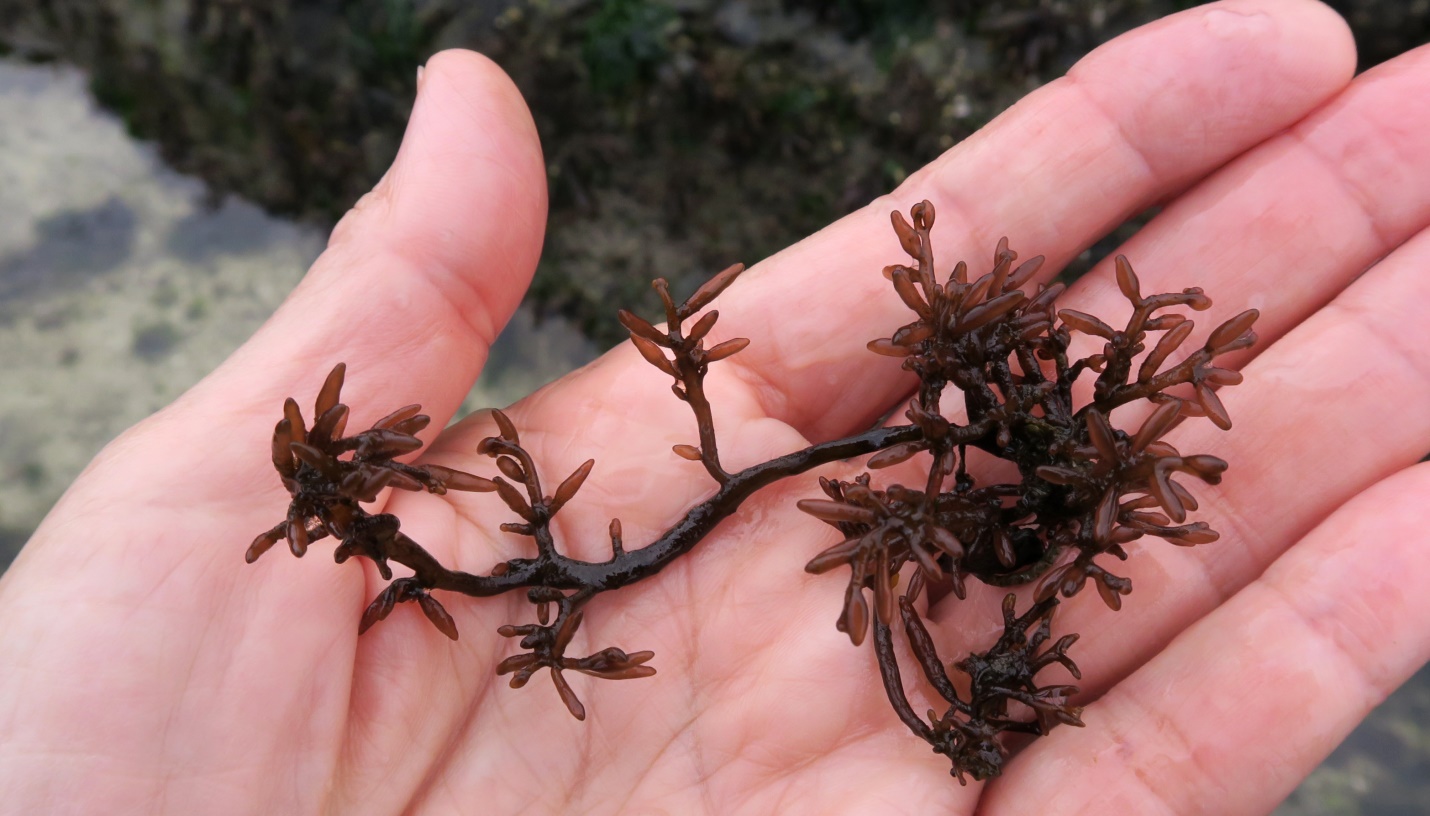
Figure 2: Pictured here is one Neogastroclonium subarticulatum thallus that was found washed ashore in the drift at Gonzales Bay. Juan de Fuca Strait, B.C., Canada. August 23, 2021. Photo ID 27333 ©Seaweedwhisperings.com
Person 2:
I found you today in your habitat, alive and anchored to rock (in the past I’ve only found you washed ashore).
How nice to find you in your home!
It’s impossible to see your holdfast on the rock outcrop as growing right alongside and all around you are clumps of the tiny, many branched red alga, Pretty Polly.
Your form is rather ‘crude’ looking. Like a child’s effort at modelling clay into tubular shapes. Lumpy, bumpy, not quite finished or polished at all.
Your branches end in a rounded stubby fashion.
And your main stem has branches that are arranged in no distinct pattern, appears random, unplanned, and certainly without a fixed design.
Where the branches join the main thalli, they are constricted. This constriction makes them look like they may not be affixed strongly, could break off easily.
The little branches look succulent in nature and they are translucent.
The newest tips are the lightest caramel brown color; your main thallus and older branches are an impenetrable deep red brown.
Washed ashore piece – I decided to pull a small branchlet off, it took a bit of a tug to do so because, one, it is strongly attached and, two, it is slippery to try to grasp.
When I squeezed the branchlet a clear somewhat stringy mucus-like liquid was exuded.
I tried again, same result – there’s mucus in you!
Your stems look succulent and with the mucus inside, well, they probably are.
Also your overall look, especially in comparison to all the of the other seaweed forms around you, reminds me of some desert plants, most notably some species of cholla cacti. Of course you have no spines, but you grow like a small bush, with plump stems and no leaves.
You do stand out as different compared to your macro algae neighbors.
Different and notable for what you are NOT:
Not beautifully colored.
Not formed in some interesting design or pattern.
Not big.
Not tidy.
Simple, crude, hastily put together kind of look.
Your energy seems somewhat aware of these “nots”; I think you can easily feel shame and do not like to be compared because you often are thought of as “less than”.
But within I think you know that your view is valid. What you understand is true for you.
You’re a bit sad, but also resigned to the fact, that not many others notice you, let alone get down to your level and join you there, Sea Belly, to hear what you have to say. Is this why you can become impenetrable, inaccessible…?
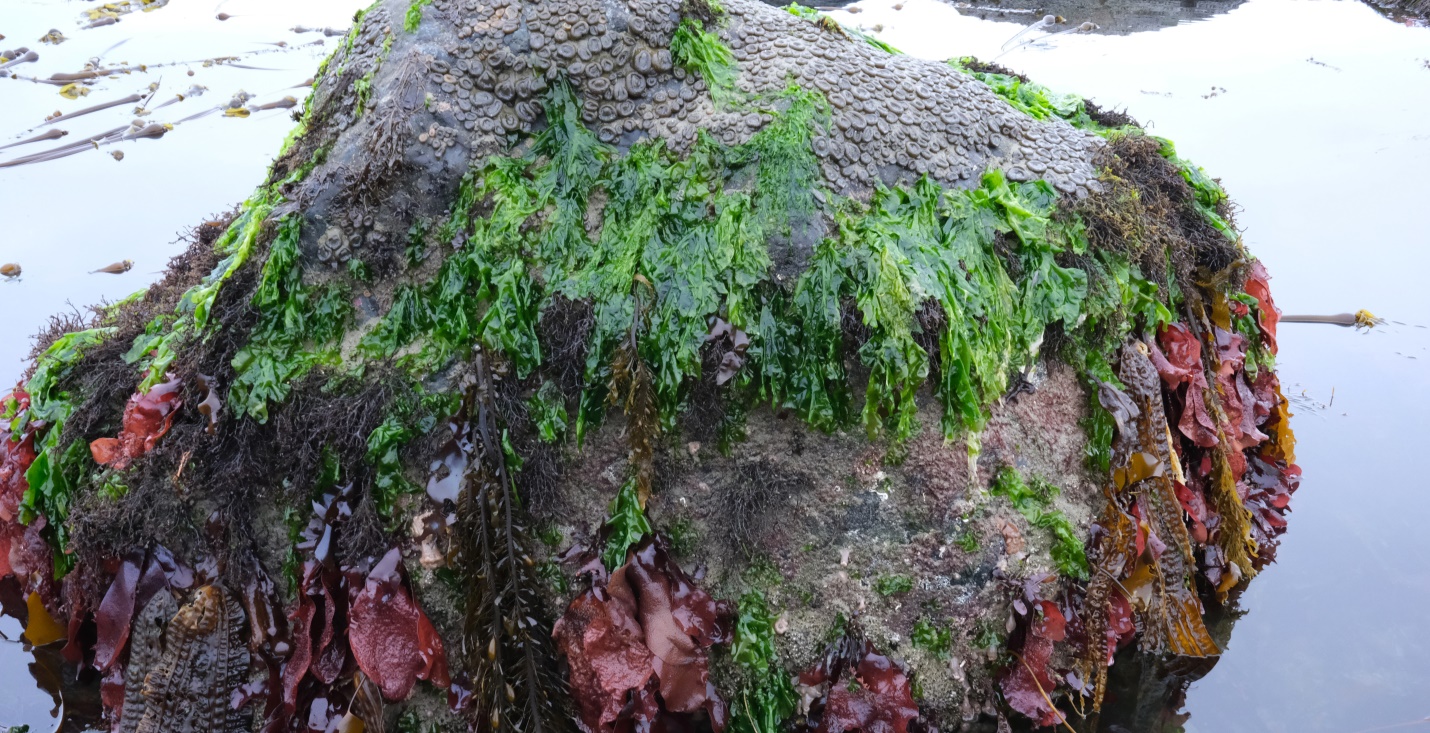
Figure 3: This large boulder is richly populated with sea life. Among the algal representatives, Sea Belly is present, although it doesn’t really catch your attention. From this distance the bright greens and various reds and caramel browns stand out; the much darker, many branched, smaller dimensioned seaweed, Neogastroclonium subarticulatum, is intermixed and actually quite abundant also. Wickaninnish Beach, outer coast Vancouver Island, B.C., Canada. July 14, 2022. Photo ID 27334 ©Seaweedwhisperings.com
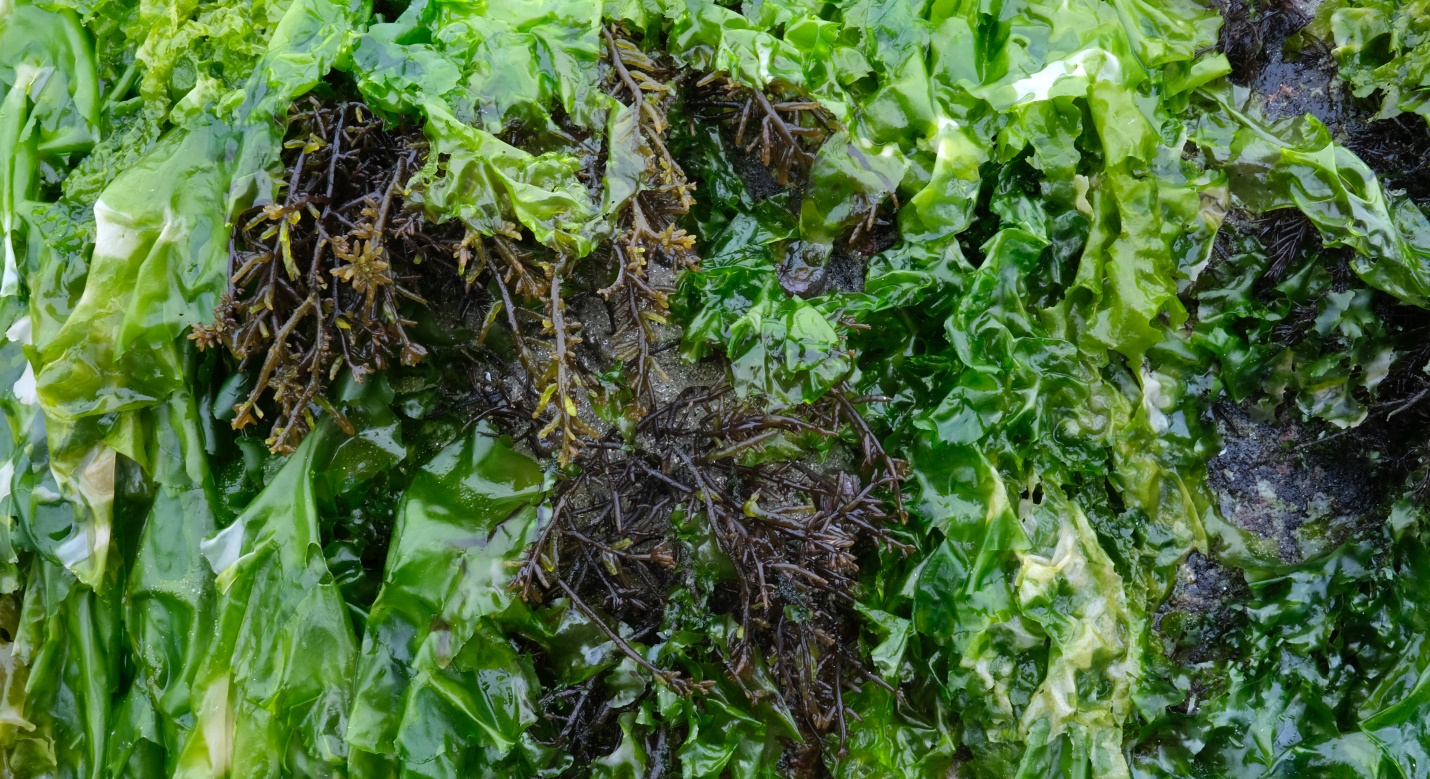
Figure 4: A closer view shows the Sea Belly thalli that are growing here amongst the Ulva blades. Note the yellow green coloration of some of the new and hollow branchlets as they contrast with the dark red, almost black looking solid core basal stems. Wickaninnish Beach, outer coast Vancouver Island, B.C., Canada. July 14, 2022. Photo ID 27335 ©Seaweedwhisperings.com
Discussion:
“NEOGASTROCLONIUM SUBARTICULATUM” – this is a very long and rather overly-official sounding name for an alga that seems so simple and small and somehow not yet quite ‘perfected’-looking. The common name, Sea Belly, is a much better ‘fit’ to its energy.
The scientific name also is reminiscent of the Mary Poppins song involving a rather ‘precocious’ invented word; the word is “SUPERCALIFRAGILISTICEXPIALIDOCIOUS”. Part of the lyrics of the song recommend that if one is ever finding they have nothing to say, well, just summon up this word, supercalifragilisticexpialidocious, and then you’ll have a lot to say. It also warns to use it carefully, or it can change your life. This feels like how Sea Belly can be; communication and identifying what they want to express with language can be at times very difficult. It’s not an absence of intelligence, not at all, but rather a bewildered questioning type of timidity about knowing one’s own self. If you don’t have clarity on your own wants, it is very nearly impossible to express them to others. Sometimes Sea Belly may find that they are misrepresenting themselves without awareness of it; certainly there is no planned deceit. It is this false precociousness that can trip them up. If they embrace that their pace is slower and that certainty comes to them in ways different from many others, they will do just fine.
Loosely…, irregular…, blunt-tipped…, many of the descriptors of this seaweed’s morphology seem to point again to a quality in this seaweed that is somewhat unsettled, unsure and still working things out – again, not yet ‘perfected’. As a macro alga living in the marine intertidal zones the species is certainly successful, and it seems that one of its main strengths is its tenacious ability in holding onto its home base. The rest of the growth, certainly compared to many other seaweeds, is really rather unremarkable. So, for this seaweed it seems that the base is all important, and the growth outward from there is only really just tentatively being explored and developed. It feels like there is more to come, but that is not something that is proclaimed loudly, it is hinted at only ever so gently.
The random and unplanned feeling seems to apply to where this seaweed makes its home and with whom it therefore can end up in association with. It seems that even if the conditions and/or location prove to be unsupportive and lacking in important ways, Sea Belly, stubbornly holds fast – once established, it does NOT want to leave its home.
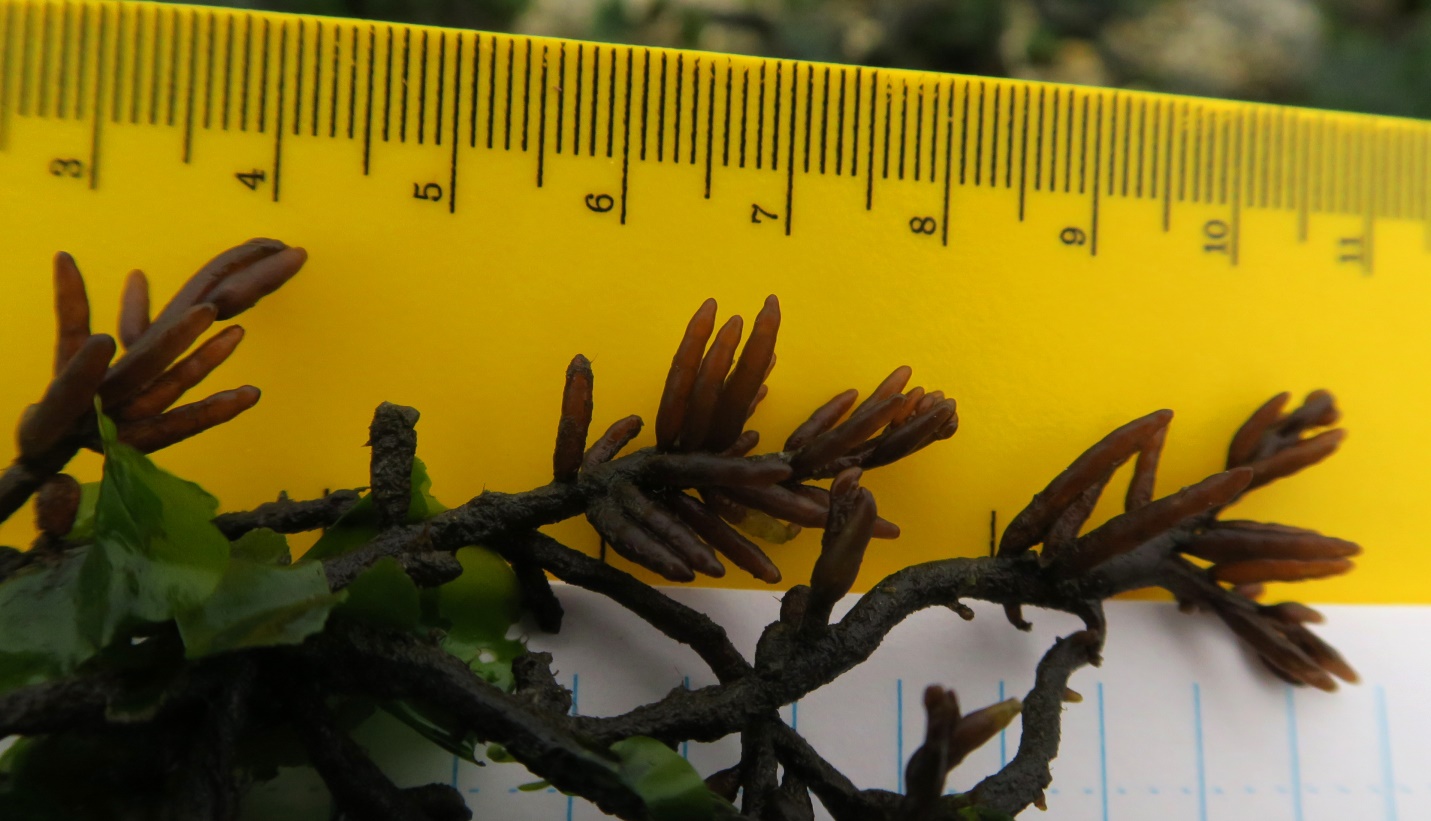
Figure 5: Neogastroclonium subarticulatum – this larger than life view shows the growth form of the branchlets – irregular constrictions give a slightly bumpy or crude look. Some authors liken them to ‘sausage-shaped’ clusters. This stem also has some Ulva and marine ‘felts’ growing on it. Gonzales Bay, Juan de Fuca Strait, B.C., Canada. 20 Aug 2021. Photo ID 27336 ©Seaweedwhisperings.com
Biology & Natural History Information:
Description:
This red alga can present in deceptive colors; it’s often a dark brown in color and can even look greenish or yellowish, but its reddish base reveals its true phylogeny. Erect, annul branches arise from an irregularly shaped perennial holdfast. The cylindrical branches, usually approximately 3 mm in diameter, can grow to lengths of 25 cm or a bit longer in good locations. The main axes tend to fork in a loosely dichotomous fashion. Each individual has several of these main branches; the lower parts are solid and mostly lack side branches, but at the upper parts produce hollow terminal branchlets, up to 20 mm long. These branchlets are pinched/constricted at the base where they adjoin the main axes and blunt tipped and often dimpled at the tips. Internally these branchlets have transverse diaphragms. Male and female gametophytes are separate individuals.
Habitat:
Sea Belly grows attached to rocks, sometimes in tidepools, and can be found in the mid to low intertidal zones, continuing on down sub tidally to 14 meters.
Distribution:
Southern Southeast Alaska and along the western coastline of North America to Baja California, Mexico.
Remarks:
Neogastroclonium subarticulatum, along with several other common red seaweeds, can grow to create a substantial short, dense turf in the lower intertidal zone. They can be so successful at holding onto this prime intertidal territory that seaweed growers in some regions have blasted this turf off the rock to clear the way for other more ‘human-desired’ species. Herbivores enjoy the ‘succulent’ looking branchlets of Sea Belly and in some cases identification of this species may be confusing as they can be cropped back to the base stems and virtually missing from the morphology. This is the type species (holotype) of the genus, Neogastroclonium.
Classification:
Phylum: Rhodophyta
Class: Florideophyceae
Order: Rhodymeniales
Family: Champiaceae
Genus: Neogastroclonium
Species: Neogastroclonium subarticulatum (Turner) L.Le Gall, Dalen & G.W.Saunders 2008
Previous name(s): Gastroclonium subarticulatum
![]()